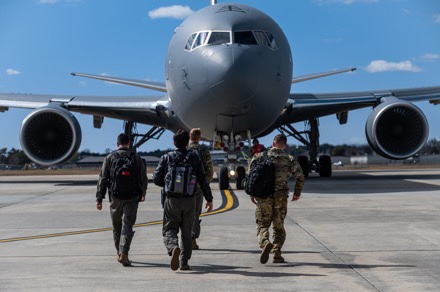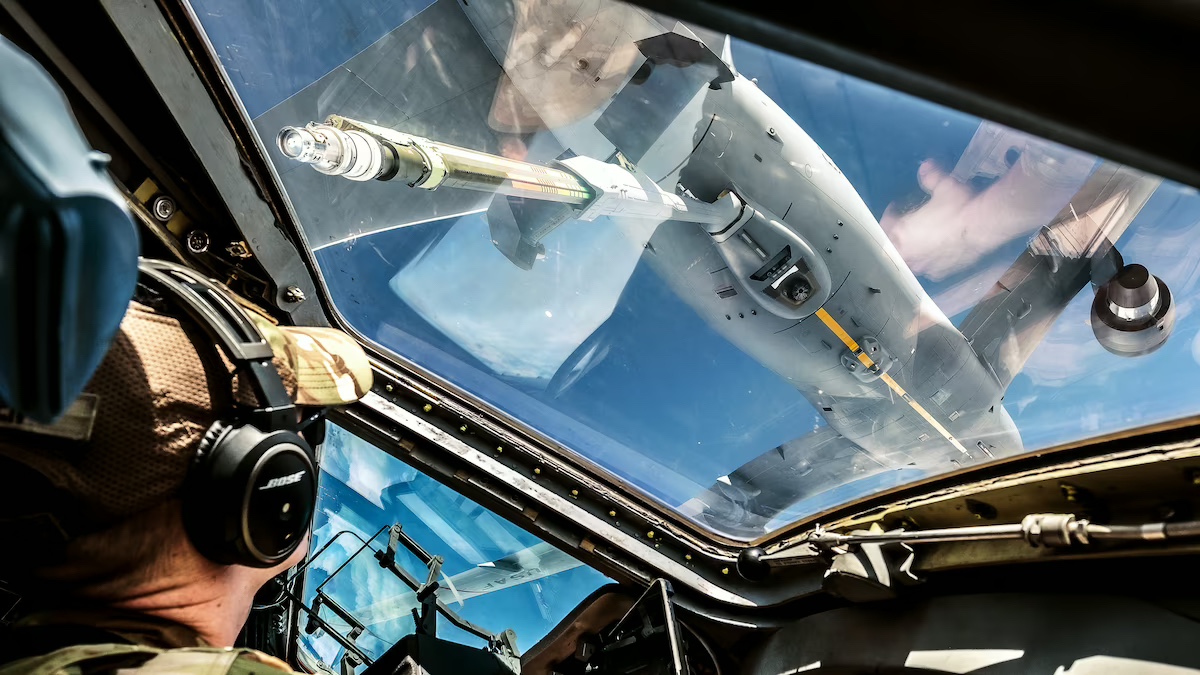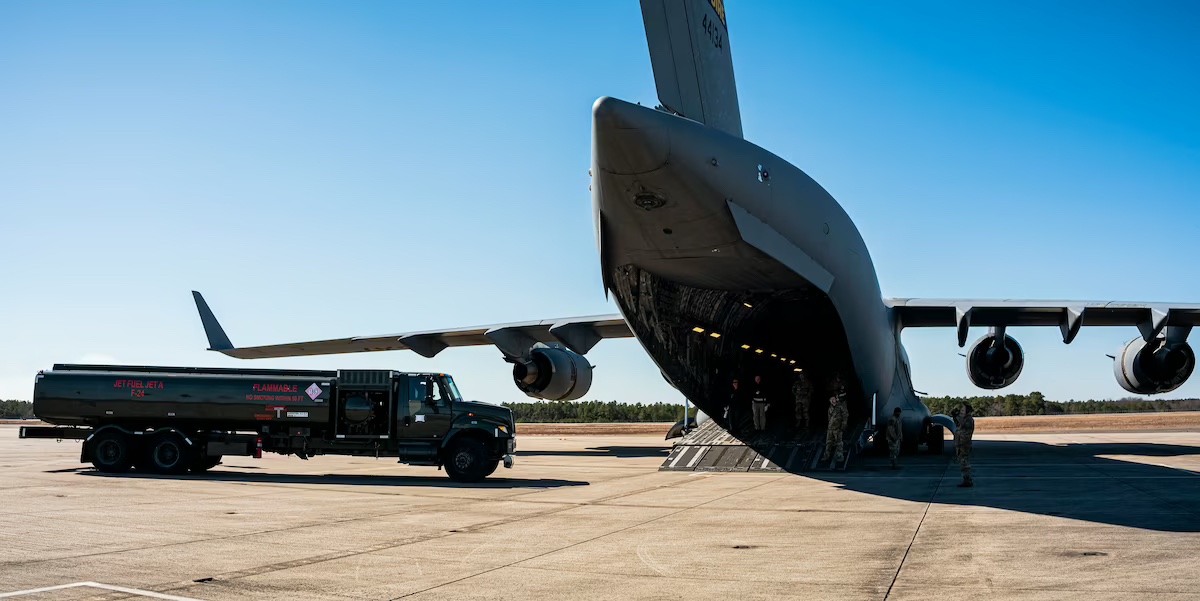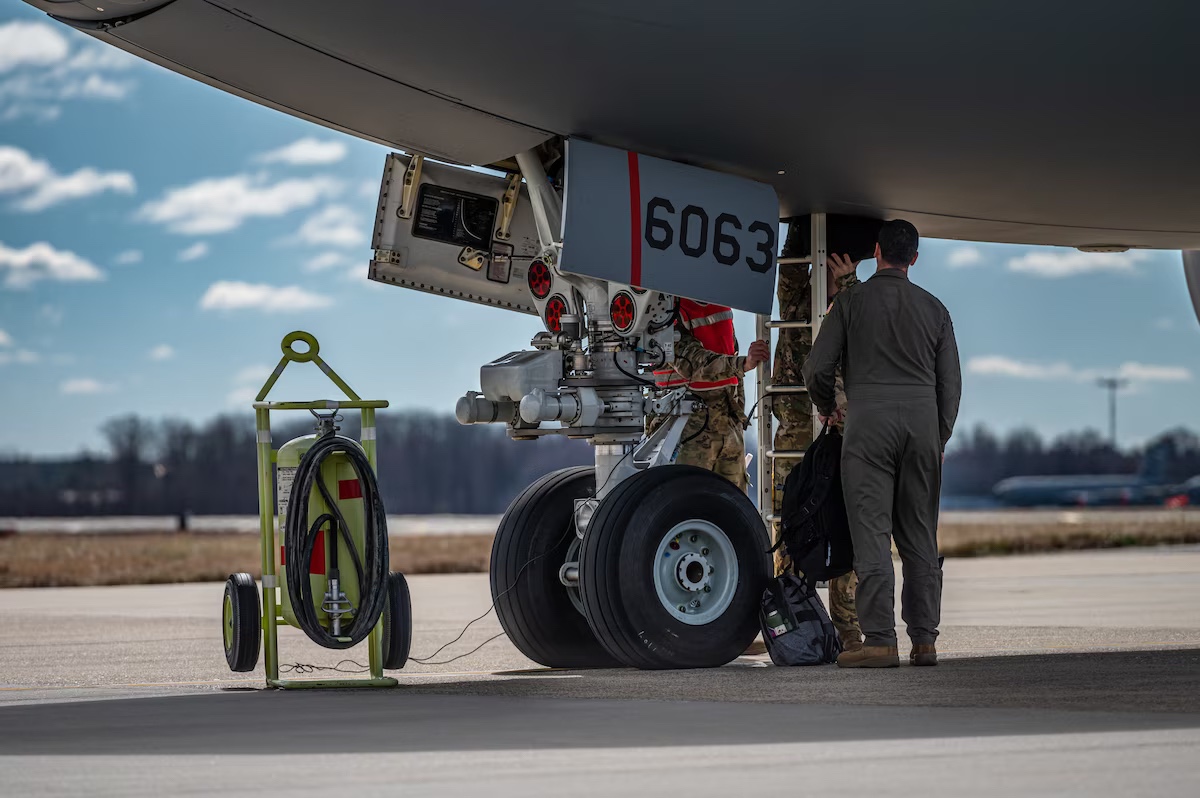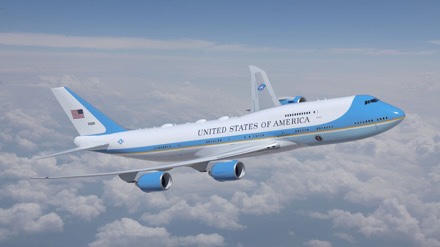
HOLLOMAN AIR FORCE BASE, N.M. (AFNS) —
Rocket sled testing is critical to bridging the gap between the laboratory and full-scale flight tests for weapon systems under development.
Keeping those sleds moving is the focus of a joint effort within the Department of Defense, which operates three sled track organizations, one each at China Lake, California; Eglin Air Force Base, Florida; and Holloman Air Force Base. Two other non-DoD tracks, Sandia National Laboratories in New Mexico and a track in Utah, round out what are considered the Big 5 sled tracks.

Holloman High Speed Test Track, a facility operated by the 846th Test Squadron, 704th Test Group, Arnold Engineering Development Complex, can achieve the fastest speeds among the five tracks and is used for a variety of tests, including munitions, crew escape systems, guidance systems, aerodynamics and environmental effects.
“At 50,000-plus feet, Holloman High-Speed Test Track is the longest and most versatile sled track, to our understanding, in the world,” said Bryan Sinkovec, Joint Economical Sled Track Rocket, or JESTR, project director and a test capabilities integration engineer with the Capabilities Integration Branch Operating Location – Holloman, Plans and Programs Division, AEDC.
Since sled tracks began operating, they have primarily used solid rocket motors and they have been the exclusive source of propulsion for more than three decades, according to Sinkovec.
The rocket motors currently in use are mainly sourced from surplus motors repurposed from Cold War assets, most of which were made in the 1950s, 1960s and 1970s. The motors work for sled track testing because of their short burn times, enabling them to achieve fast acceleration over the relatively short track lengths. Not all the motors available, though, are compatible with sled track testing.
While the surplus motors are essentially free, they have their limits in both quantity and capability.
The JESTR project aims power sled testing into the future by developing new sled track motors purpose-built for high performance, short burn times and structurally stable under sled track conditions.
The Air Force is leading the joint effort by the sled tracks and other DoD organizations, including the Navy. Desiree Craig, deputy project director for JESTR and flight chief for program management in the 704th Test Support Squadron, led the effort to leverage a Navy run other transaction authority.

“An OTA allows us to collaborate with the contractors to better define the technical portions of the statement of work to get the best product in the end,” Craig said. “Every portion of this project is team based.”
Since surplus motors were never intended for sled track usage, sleds and testing had to be designed around the motors.
“When describing our requirements, we were able to design the motor to the sled track testing instead of the other way around,” Sinkovec said. “That was new and exciting. We’ve always had to design our tests around the motors.”
The project is developing multiple sled track motors that vary in size and capability – small, medium, large and high performance.
While developing new rocket motors is the central focus, as the effort got underway team members realized they couldn’t develop the motors in a vacuum.
“The program was initially focused on only developing four rocket motors for production, but to execute an actual test it requires motors and sleds,” Craig said. “One of the problems we were running into was being able to utilize some of the legacy sleds here at the Holloman High Speed Test Track and fitting the new motors to all those various sleds. Therefore, we had to change how we looked at this program, from just motors to delivering the total capability.”
Realizing the effort was bigger than just designing new motors, the team then began to develop scenarios or missions the motors would be used in as proof that they work in the unique environment. Three scenarios – hypersonic impact, hypersonic rain erosion and supersonic munitions – will be tested at HHSTT, with a fourth – transonic impact – slated to be tested at China Lake.
The effort now includes developing new sled types, one of which is being developed in-house by the 846th Test Squadron.
“This effort is exciting because we’ve always had this lingering over our heads and now, we think we have a long-term solution,” Sinkovec said.
The DoD effort will benefit all the sled tracks by leading to the development of the production means and creating a supply of sled track motors.
Story by Jill Pickett, Arnold Engineering Development Complex Public Affairs
Photos by Deidre Moon, USAF



